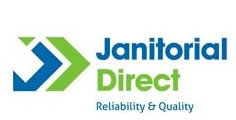‘Going Green’ went from being a quirky term used by a socially conscious few to a trend that has everyone from schoolchildren to pensioners making changes to limit their carbon ‘footprint’ on the world.
Because of this change in attitudes the demand for companies to provide environmentally friendly products has increased, with the washroom being another area where people are keen to be green – whether it be the soap in soap dispensers or the toilet tissue on the toilet roll holders. This has lead to the broadened popularity of the EU Ecolabel.
It all started nearly 10 years ago in 1992 when the EU Ecolabel was pioneered as a voluntary scheme to help businesses make ‘green’ choices.
It helps companies use effective products that are environmentally friendly.
Products must undergo a difficult process that tests the entire lifecycle of the product. In order to achieve accreditation it must meet strict criteria measuring its environmental impact and performance.
There are 14 key areas in which a product is judged in order to reach the coveted Ecolabel.
Toxicity to aquatic organisms measures the dilution volume toxicity for each individual ingredient.
All the surfactants in the product must be biodegradable.
Dangerous, hazardous or toxic substances or preparations are considered and regulated.
Biocides are prohibited except for particular dosages in order to preserve the product.
Both dyes and colourants and fragrances have strict rules when used in the products.
Sensitising substances whether inhaled or tactile are also tested.
To achieve an Ecolabel products cannot have more than 10 per cent measurement of volatile organic compounds (VOCs) and any amount of phosphorous is meticulously analysed.
Packaging, effectiveness for consumer use and training for professional cleaners using particular products are also taken into account.
The rigorous criteria products must surpass to achieve an Ecolabel show washrooms are growing more and more eco-friendly.
